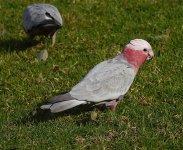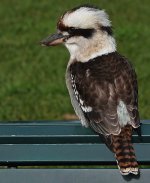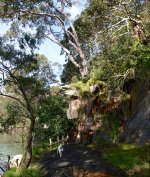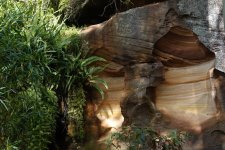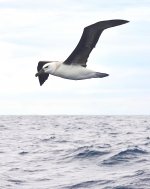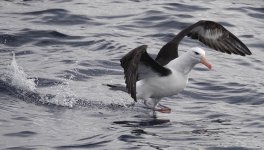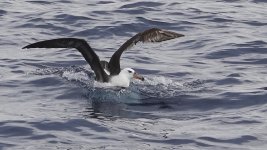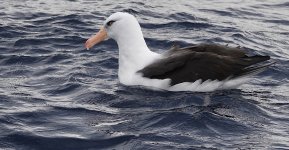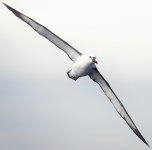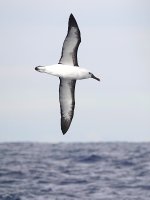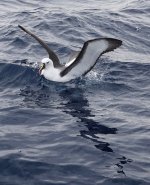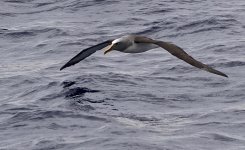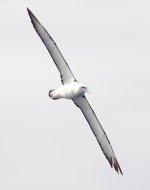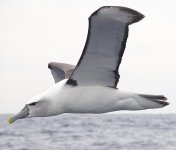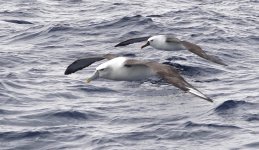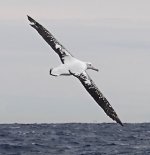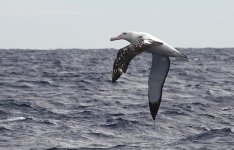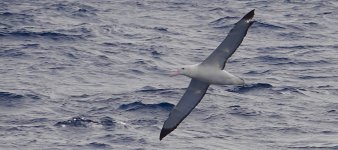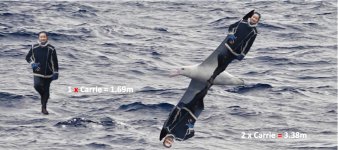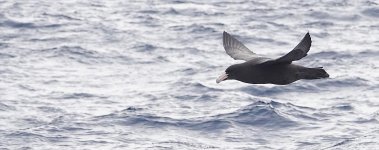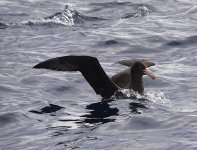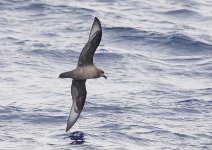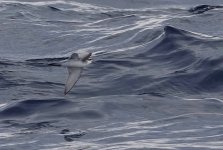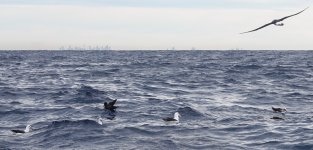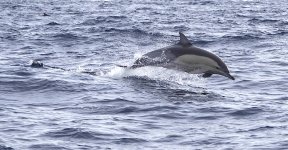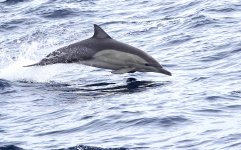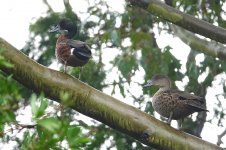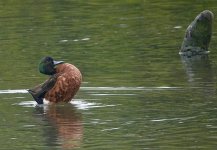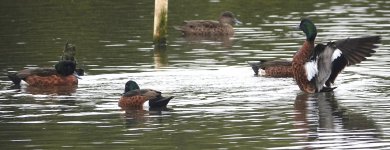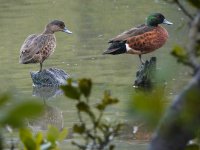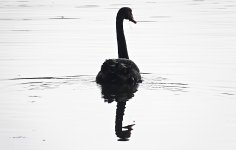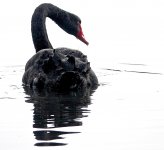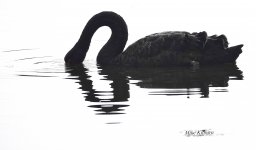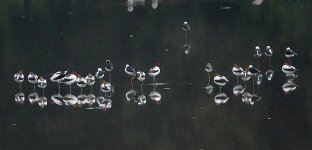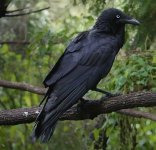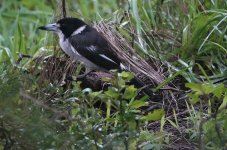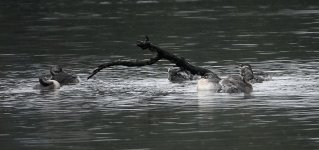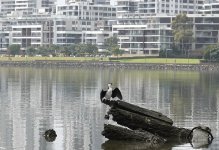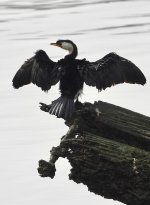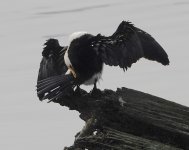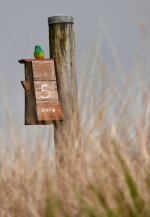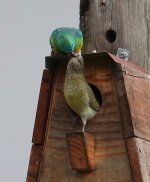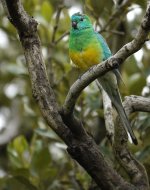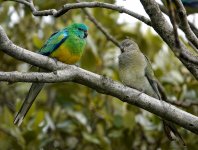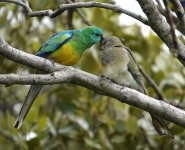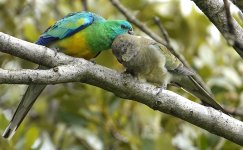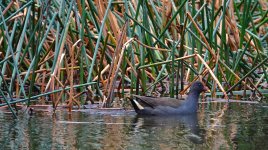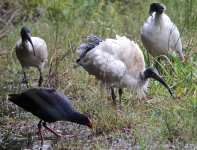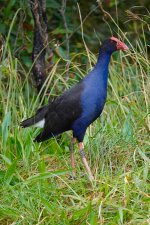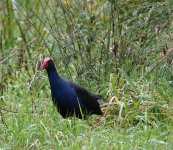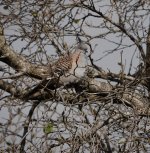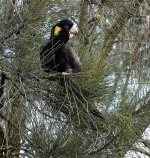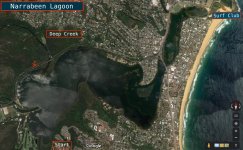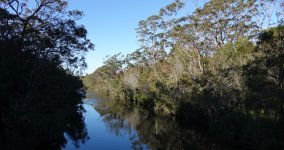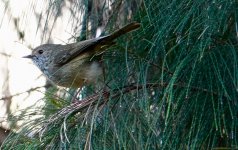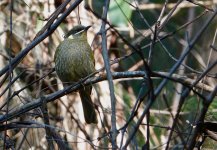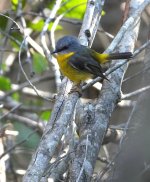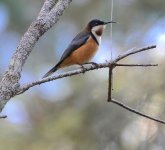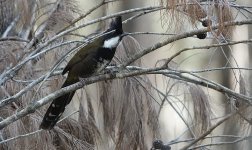
And now my biggest day of birding so far - the pelagic. The
Sydney Pelagics boats take just ten birders once a month out to Brown's Mount, a seamount rising 133m above the seabed, which here - 21 nautical miles out from Sydney Harbour Heads, and beyond the continental shelf - is around 600m deep. I was fortunate enough to get on the boat with three days notice because of three COVID cancellations - and the fact I live just ten minutes from the pickup point at Mosman Wharf! That was absolutely not planned but is a huge extra blessing in choosing to live here!
I met four of the birders on Mosman Wharf at 6:45 and at 7:00 the remaining six participants joined at Rose Bay on the southern side of Sydney Harbour. That 15 minute journey amazingly delivered a flight of 14
Yellow-tailed Black Cockatoos (68) flying north over the Sydney Harbour bridge against the orange light of dawn. Zooming in on the third shot below reveals that each bird has a pale cheek patch, which in this part of the world separates this species from the two other black cockatoos that occur here.
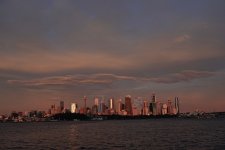
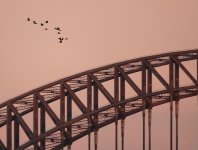
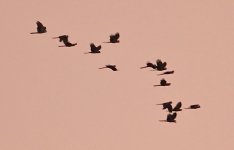
Other birds included a scattering of
Silver Gulls and 21
Pied Cormorants roosting on the east side of Cremorne Point. As we headed past the Heads we almost immediately began seeing
Fluttering Shearwaters. The same size as Manx or Black-vented Shearwaters they are typically fond close to the coast and I've seen then on every visit to Manly. But they're small and fast so getting a pic is far from easy and these are included more for completeness than quality. In amongst them were two slightly larger and distinctly darker-headed
Hutton's Shearwaters (69) They were an Aussie lifer, but I've seen them before on my only other pelagic trip - the amazing Hauraki Gulf pelagic, which goes from just north of Auckland - and I'm not sure any of us noticed the
Black-browed Albatross you can see in the background of the first shot of the Fluttering Shearwaters, but it does provide some indication of how close these wonderful birds come to the shore. A few more albatross sp. were circling around a commercial fishing boat away to the north, but we did not approach it as it was far north of our track and we had significant ground to cover to reach the Brown's Mount.
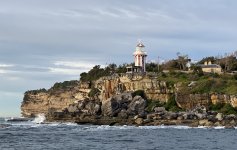
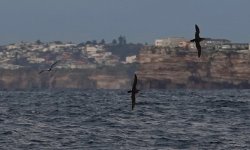
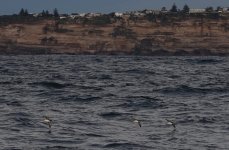
My first full fat lifer of the day was two
Brown Skuas (70) hanging around gaggle of small fishing boats about an hour offshore. Unfortunately we did not approach too closely in oder to avoid criticism for spoiling the fishing, but even from a distance the heavy-headed broad-shouldered bulk of these bully boy parasitic feeders was highly apparent. These were followed around an hour later by a lovely juvenile
Yellow-nosed Albatross (70), which flew right by the boat and offered fantastic views of its snowball-white head and the sharply contrasting all black bill and dark eye. This is the smallest of the albatross species on offer, and one I very much hope to pick up from Manly, so these close views were just fantastic.
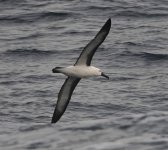
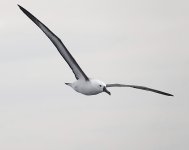
As we continued we passed through an impressive school of around 100
Common Dolphins, some of which played with the boat - riding the bow wave and appearing close alongside.
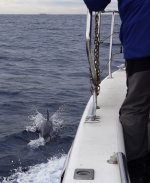
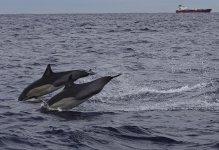
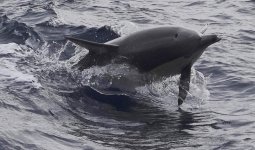
More to come ...
Cheers
Mike

